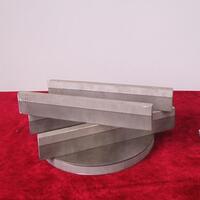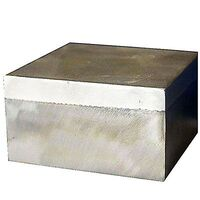1. Introduction
When you hear ‘metal clad,’ your mind might jump to electrical wiring or industrial piping—but in architecture, metal clad is quietly revolutionizing how buildings look, perform, and endure. Forget cookie-cutter siding; today’s metal clad wall systems are engineered marvels blending form, function, and resilience.

From coastal homes wrapped in corrugated steel facade panels to skyscrapers sheathed in sleek standing seam metal siding, architects are turning to clad metals for their unmatched longevity and design flexibility. Let’s dive into how these advanced materials are shaping the future of sustainable, high-performance buildings.
2. What Does Metal Clad Mean in Architecture?
The term ‘clad metal meaning’ refers to a composite material where two or more metals are bonded—often through roll bonding, explosion welding, or electroplating—to combine desirable properties like corrosion resistance, strength, and aesthetics.
In construction, ‘metal clad meaning’ expands to include exterior systems like metal clad siding, metal clad roofs, and full metal facade assemblies. These aren’t just decorative—they’re functional shields against weather, fire, and time.
2.1. Common Types of Clad Metals in Building Design
- Aluminum clad steel: Lightweight yet strong, ideal for vertical standing seam metal siding.
- Stainless clad aluminum: Offers the reflectivity of aluminum with the corrosion resistance of stainless steel—perfect for marine environments.
- Titanium clad and copper nickel clad: Used in high-end or corrosive settings like chemical plants or luxury residences.
- Corten steel plate: Forms a stable rust-like appearance, eliminating the need for painting while adding dramatic texture.
3. Real-World Applications: Beyond Basic Siding

Architects aren’t just slapping up ‘exterior corrugated metal siding’ anymore. They’re engineering performance-driven envelopes using precision-engineered systems.
Take the ‘zinc clad roof’—a favorite in European design for its self-healing patina and 80+ year lifespan. Or the ‘zinc clad dormer,’ which integrates seamlessly with historic renovations while offering modern thermal performance.
3.1. Corten Steel Facades: Beauty in Controlled Decay
Corten steel siding has exploded in popularity, especially for minimalist and industrial-style homes. The ‘corten steel facade’ develops a rich, earthy patina that stabilizes over time, reducing maintenance dramatically.
While ‘corten steel siding cost’ can be higher upfront—typically $8–$15 per sq. ft.—its lifecycle value often beats painted alternatives. And yes, it’s commonly used on a ‘steel clad house’ or even a ‘metal clad shed’ for striking visual contrast.
3.2. Standing Seam Systems: Precision Meets Performance

Systems like ‘colorbond standing seam’ or ‘pac clad standing seam roof’ dominate commercial and residential roofing. Their interlocking seams prevent water intrusion, handle thermal expansion, and support solar panel integration.
Vertical applications—like ‘standing seam facade’ or ‘vertical standing seam metal siding’—add rhythm and shadow play to building elevations while resisting wind uplift and driving rain.
4. Advanced Composite Cladding: Where Engineering Meets Aesthetics
Modern cladding often uses layered alloys. For example, ‘aluminum clad stainless steel’ combines the lightness of aluminum with the hygiene and durability of stainless—ideal for labs or food processing facilities housed in a ‘metal clad building.’
Even ‘aluminum clad pipe insulation’ finds crossover use in architectural detailing, where insulated metal panels improve energy efficiency without sacrificing design.
4.1. Niche Materials Making Waves
- Copper siding: Ages gracefully to green patina; used on high-end ‘metal clad house’ designs.
- Zinc metal siding: Recyclable, low-maintenance, and naturally antimicrobial.
- PAC CLAD HWP and PAC CLAD column covers: Offer clean lines and structural protection in civic architecture.
- Aluminium clad sheet (or aluminum clad sheet): Frequently used for soffits, fascias, and custom metal weatherboard profiles.
5. Sustainability and Longevity: Why Architects Choose Metal Clad
Metal cladding isn’t just tough—it’s green. Most ‘clad metals’ contain 30–95% recycled content and are fully recyclable at end-of-life.
A ‘steel clad building’ can last decades with minimal upkeep. Unlike wood or vinyl, metal doesn’t rot, warp, or attract pests. And innovations like ‘aluminum diamond tread plate’ or ‘stainless steel checker plate’ even double as durable walkways or accent features.
6. Conclusion
From the rugged elegance of a ‘corrugated steel facade’ to the refined gleam of a ‘zinc facade,’ metal clad systems are no longer just industrial afterthoughts—they’re central to next-gen architectural expression.
As material science advances, expect to see more hybrid solutions like ‘titanium clad’ panels or ‘inconel weld overlay’ details in extreme environments. Whether you’re designing a ‘steel clad inc’ headquarters or a backyard ‘metal clad shed,’ the future of building skins is undeniably metallic—and brilliantly clad.
Our Website founded on October 17, 2012, is a high-tech enterprise committed to the research and development, production, processing, sales and technical services of ceramic relative materials such as Metal. Our products includes but not limited to Boron Carbide Ceramic Products, Boron Nitride Ceramic Products, Silicon Carbide Ceramic Products, Silicon Nitride Ceramic Products, Zirconium Dioxide Ceramic Products, etc. If you are interested, please feel free to contact us.
